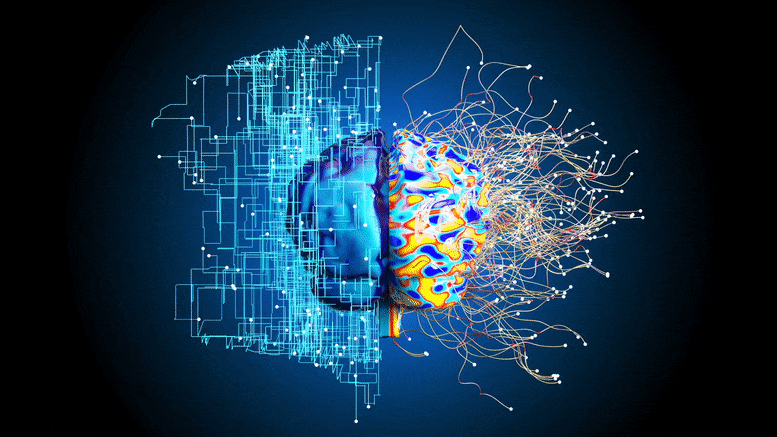Investigadores de Scripps Research han creado una nueva herramienta para monitorear la plasticidad cerebral.
Los investigadores de Scripps Research estudiaron cómo cambian los niveles de varias proteínas en las células cerebrales en respuesta a la actividad cerebral.
Instituto de Investigación Scripps Los científicos han creado una nueva herramienta para monitorear la plasticidad cerebral, el proceso por el cual nuestros cerebros se remodelan y modifican físicamente cuando aprendemos y experimentamos cosas nuevas, como ver una película o aprender una nueva canción o idioma. Su método, que examina las proteínas producidas por diferentes tipos de células cerebrales, tiene el potencial de proporcionar explicaciones fundamentales sobre cómo funciona el cerebro, así como proporcionar información sobre muchas enfermedades cerebrales en las que se interrumpe la plasticidad.
Investigaciones anteriores realizadas en varios laboratorios han demostrado cómo la actividad cerebral induce cambios en la expresión génica en las neuronas, un paso inicial en la plasticidad. La investigación del equipo se publicó recientemente en la revista Revista de neurocienciase centra en la siguiente etapa importante de la plasticidad: la conversión del código genético en proteínas.
dice Hollis Klein, PhD, Profesor Hahn y presidente del Departamento de Neurociencia en Scripps Research y autor principal del nuevo trabajo.
Dos cosas suceden cuando aprendes algo nuevo: primero, las neuronas de tu cerebro transmiten instantáneamente señales eléctricas a través de nuevas vías neuronales. Esto eventualmente conduce a cambios en la estructura física de las células cerebrales y sus conexiones. Pero durante mucho tiempo, los científicos se han preguntado qué sucede entre estos dos pasos. ¿Cómo experimenta el cerebro cambios más fundamentales como resultado de esta actividad eléctrica en las neuronas? Además, ¿cómo y por qué esta plasticidad se deteriora con la edad y con ciertas enfermedades?
Previamente, los investigadores han estudiado cómo los genes en las neuronas se activan y desactivan en respuesta a la actividad cerebral, con la esperanza de obtener información sobre la plasticidad. Con el advenimiento de las tecnologías de secuenciación de genes de alto rendimiento, rastrear genes de esta manera se ha vuelto relativamente fácil. Pero la mayoría de estos genes codifican proteínas, las verdaderas unidades de trabajo de las células, cuyos niveles son difíciles de monitorear. Pero Klein, en estrecha colaboración con el profesor Scripps John Yates III, Ph.D., y el profesor asociado Anton Maximov, Ph.D., querían observar directamente cómo cambian las proteínas en el cerebro.
«Queríamos saltar al fondo de la piscina y descubrir qué proteínas son importantes para la plasticidad del cerebro», dice Klein.
El equipo diseñó un sistema en el que podían entregar un amino etiquetado privado[{» attribute=»»>acid—one of the building blocks of proteins—into one type of neuron at a time. As the cells produced new proteins, they would incorporate this amino acid, azidonorleucine, into their structures. By tracking which proteins contained the azidonorleucine over time, the researchers could monitor newly made proteins and distinguish them from pre-existing proteins.
Cline’s group used the azidonorleucine to track which proteins were made after mice experienced a large and widespread spike in brain activity, mimicking what happens at a smaller scale when we experience the world around us. The team focused on cortical glutamatergic neurons, a major class of brain cells responsible for processing sensory information.
After the increase in neural activity, the researchers discovered levels of 300 different proteins changed in the neurons. While two-thirds increased during the spike in brain activity, the synthesis of the remaining third decreased. By analyzing the roles of these so-called “candidate plasticity proteins”, Cline and her colleagues were able to gain general insight into how they might impact plasticity. Many of the proteins are related to the structure and shape of neurons, for instance, as well as how they communicate with other cells. These proteins suggested ways in which brain activity can immediately begin to impact connections between cells.
Additionally, a number of the proteins were related to how DNA is packaged inside cells; changing this packaging can change which genes a cell can access and use over a long time period. This suggests ways that a very short spike in brain activity can lead to more sustained remodeling within the brain.
“This is a clear mechanism by which a change in brain activity can lead to waves of gene expression for many days,” says Cline.
The researchers hope to use this method to discover and study additional candidate plasticity proteins, for instance those that might change in different types of brain cells after animals see a new visual stimulus. Cline says their tool also could offer insight into brain diseases and aging, through comparisons of how brain activity impacts protein production in young versus old and healthy versus diseased brains.
Reference: “Activity-Induced Cortical Glutamatergic Neuron Nascent Proteins” by Lucio M. Schiapparelli, Yi Xie, Pranav Sharma, Daniel B. McClatchy, Yuanhui Ma, John R. Yates 3rd, Anton Maximov and Hollis T. Cline, 19 October 2022, JNeurosci.
DOI: 10.1523/JNEUROSCI.0707-22.2022
The study was funded by the National Institutes of Health, the Hahn Family Foundation, and the Harold L. Dorris Neurosciences Center Endowment Fund.

«Propenso a ataques de apatía. Explorador de aspirantes. Analista ávido. Fanático de Internet. Comunicador»







More Stories
El servicio militar activo puede aumentar el riesgo de que las mujeres den a luz bebés con bajo peso al nacer
La ESA ha añadido cinco nuevos astronautas a su cuarta clase sólo desde 1978. Ofrece más de 20.000
Hubble revela el núcleo brillante de una histórica galaxia espiral